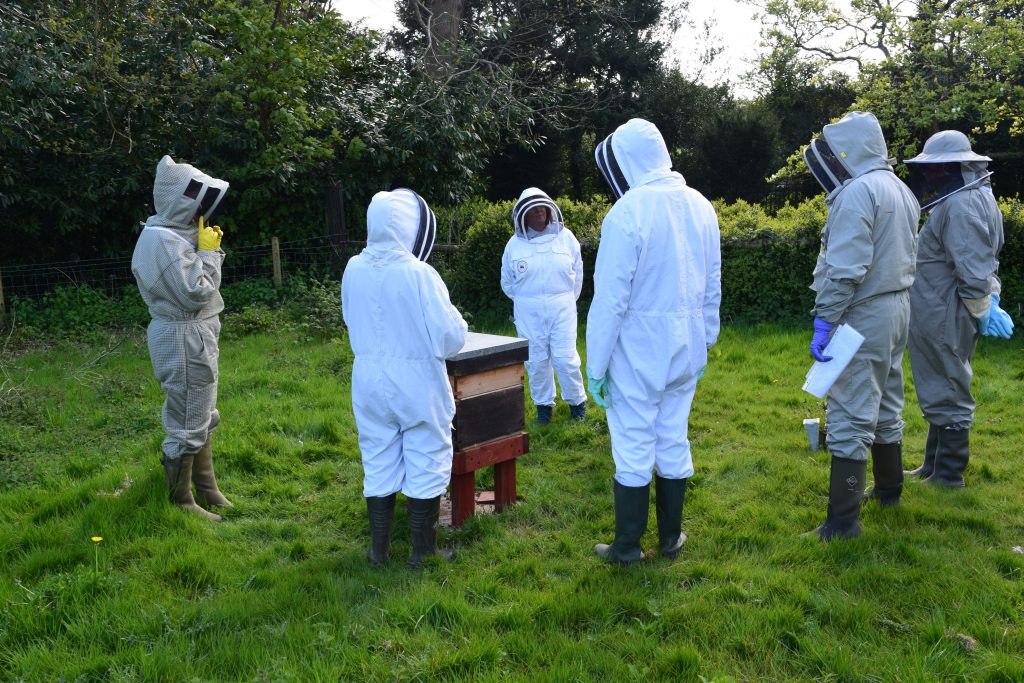The Weather Although there was still a cool wind, the apiary seemed to be sheltered from this so we went ahead with some quite intrusive work on the hives. The beginners who attended had not had any experience of opening hives so it could have been a bit overwhelming. But the bees behaved so well I’m sure it was not as alarming as it could have seemed.

Commercial to a National: One of the hives (Hive 1) had been brought brought to the apiary in a Commercial box (deep frames and small lugs) As we want to keep mostly to having Nationals on the site we needed to start the conversion process to a National box. The colony was quite strong but lacking in stores.
In the Commercial box some unused and old frames were removed and the remaining ones moved to one side of the box. We added a frame feeder to prevent the bees drawing wild comb. The National box was then placed on top with frames matching the number below, also with a dummy board The frames were mostly drawn comb so the Queen might be encouraged up there to lay. Also a brood frame of stores was added. The Queen excluder put over the top and then a super of part stores, part drawn comb.
National to a WBC: Another new colony has been brought in to the apiary in a National but, as the Association had been gifted a new WBC last year, we decided to move it into the WBC. This was a simpler process than the one above, simply moving the current boxes to one side and transferring the frames into the WBC boxes. The colony had been on double brood. As the Queen was laying well and potentially needing the space, we decided to keep it on double brood. WBC boxes are slightly smaller than Nationals generally holding 10 frames.

As with Hive 1, it was slightly lacking in stores. We had some spare brood frames filled with stores left over from last October when the bees had gone mad with collecting late ivy honey. The frames had been overwintered outside having been in the freezer beforehand for 24 hours to kill any wax moth. The honey had softened so the bees could use it so rather than waste it we put some in both these hives.

Our third hive, which has overwintered successfully in the apiary, is doing well. However, it is currently on Brood & a Half which is not ideal. That is what happens when you get caught out with not having the right equipment spare at the right time.
Unfortunate News Our colony (Hive 2), in which last time we had discovered signs of CBPV, seems to have succumbed to this virus. There was a lot more dead bees underneath the hive and, most unfortunately, the Queen was found amongst them. It seems there were some charged Queen cells left in the hive but it is doubtful there will be enough bees left to care for them so this colony is unlikely to survive. Another learning curve for our beginners.

Next week we will see if the Queen has moved up into the National box in Hive 1, check the conversion to the WBC has worked and decided what to do Hive 2.

